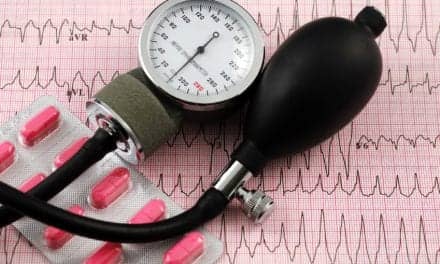HFOV and inhaled nitric oxide improve oxygenation and help newborns avoid ECMO.

In the normal child, at the time of birth, pulmonary blood flow increases by a factor of eight to 10, and pulmonary arterial blood pressures decrease to less than one half the systemic levels, all within the first 24 hours of life. Failure to make the expected transition in achieving a normal decline in PVR results in PPHN. In the neonate with PPHN, there is systemic hypoxemia associated with extrapulmonary shunting of venous blood, and there is evidence of elevated levels of pulmonary artery pressure, despite the absence of congenital heart disease.
There are many causes of PPHN, including group B streptococcal sepsis, meconium aspiration, asphyxia, congenital diaphragmatic hernia, pulmonary hypoplasia, congenital heart disease, premature closure of the ductus arteriosus, and severe hyaline membrane disease. PPHN may also be associated with maternal diabetes, maternal hypertension, or prolonged gestation.
The condition presents early in the postnatal period, beginning with cyanosis and often progressing to some degree of respiratory distress. It can mimic the symptoms of cyanotic congenital heart disease. Differentiation may be based on the presence of a prominent precordial impulse, a low parasternal murmur of tricuspid incompetence, and a large cardiac shadow appearing on a chest radiograph.
The condition has a fairly good prognosis if there is sufficient support through the acute phase of the illness. If the child can be stabilized, surgical intervention can correct underlying anatomic problems or antibiotic therapy can be instituted. Antibiotic interventions thereby increase the chances of survival by providing adequate oxygenation and preventing further stress to the neonate.
Current treatment typically includes hyperventilation, alkalosis, hyperoxia, inotropic support, and intravenous vasodilators. There are numerous significant risks involved with each of these possible treatments. Hyperoxygenation increases the diffusion of oxygen across the alveolar membrane, promotes pulmonary vasodilation, and decreases PVR. The use of high oxygen concentrations may also be toxic to the alveolar tissues. Alveolar type II cells that produce the surfactant necessary for stabilization of alveoli and maintenance of functional capacity may be destroyed. High oxygen pressures in the alveoli increase the risk of several long-term complications such as bronchopulmonary dysplasia (BPD) and retinopathy of prematurity. Alkalosis is produced by mechanical hyperventilation and should, theoretically, reduce PVR in patients with PPHN, but it is seldom useful when conventional rates of up to 150 breaths per minute are used. Using high peak inspiratory pressures to obtain adequate tidal volume also increases the risk of producing pneumothorax, other air-leak syndromes, and BPD.
Sometimes the condition requires extracorporeal membrane oxygenation (ECMO), but this is an extremely invasive and expensive procedure that may predispose the infant to intraventricular hemorrhage. In addition, many infants with PPHN are excluded from possible ECMO treatments due to low birth weight, young gestational age, or problems with the central nervous or cardiovascular systems. The treatment may be associated with neurological complications. ECMO also requires the use of large amounts of blood products and is very labor intensive. For these reasons, it is a treatment to be undertaken only as a last resort.
Smooth-muscle relaxation in the lung depends on the endothelial cells in the arteries. In 1980, a substance was described that caused acetylcholine-induced vascular relaxation; it was named endothelial-derived relaxing factor (EDRF). It was later discovered that endogenous nitric oxide is a major part of EDRF.1 Nitric oxide is a highly diffusible, colorless gas with the same density as room air and a half-life of 3 to 5 seconds. It is a sustained, selective pulmonary vasodilator. In endothelial cells, nitric oxide is produced from l-arginine by nitric oxide synthase. The nitric oxide diffuses into adjacent smooth muscle cells, where it stimulates guanylate cyclase, which increases cyclic guanosine monophosphate (GMP) and causes smooth-muscle relaxation. The gas diffuses to the intravascular space, where it rapidly binds with hemoglobin to form nitrosylhemoglobin, which is then metabolized to methemoglobin. Methemoglobin is further metabolized into nitrites and nitrates, which are excreted in urine. The effect of vasodilation in the intravascular space is minimized because of nitric oxide’s high affinity for hemoglobin (with binding being several hundred times faster than with carbon monoxide and five to 20 times faster than with oxygen). Therefore, the systemic blood pressure is unaffected.
Nitric oxide is produced by many cell types in the lung, and it plays an important physiologic role in the regulation of pulmonary vasomotor tone.2 There are several mechanisms by which this regulation takes place. It stimulates soluble guanylyl cyclase, resulting in increased levels of cyclic GMP in lung smooth-muscle cells. It is thought that the gating of potassium and calcium ion channels through cyclic GMP binding plays a role in the vasodilation. There may also be direct activation of potassium ion channels or modulation of the expression and activity of angiotensin II receptors.
Independent of its role as a vasoactive substance produced by endothelial cells, nitric oxide is also produced by other cells and has many other biologic functions, including roles in neurotransmission, immune function, and platelet aggregation. There may be many other functions that have not yet been discovered. The entire role of nitric oxide in these phenomena may have significance for therapeutic use of the gas. Additional research is currently being conducted on its place in bioregulatory pathways.
One treatment that has been used successfully to improve oxygenation and avoid ECMO is inhaled nitric oxide. Neonates may develop hypoxemia as a result of right-to-left extrapulmonary shunting or of intrapulmonary shunting. Increased PVR causes extrapulmonary shunting through the ductus arteriosus, the foramen ovale, or (possibly) both. Inhaled nitric oxide reduces the intrapulmonary shunt through improvement of ventilation-perfusion (V/Q) matching, while it decreases extrapulmonary shunting by decreasing PVR and increasing pulmonary blood flow.3
Inhaled nitric oxide seems to affect only vascular smooth muscle in the vicinity of the aerated alveoli that it reaches. In the areas of the lung where gas exchange can occur, it increases pulmonary blood flow. The result of this is decreased intrapulmonary shunting and more normal V/Q matching.4
The delivery system for the inhaled–nitric-oxide therapy adds the nitric-oxide gas into the inspiratory limb of the ventilator circuit in proportion to, and in synchrony with, the ventilator’s gas flow.5 This allows easy connection to the ventilator breathing circuit while keeping residence time (and, therefore, nitrogen dioxide levels) low. The gas cylinder is connected to a delivery system that has an injector module placed on the dry side of the humidifier. The injector module measures flow characteristics and delivers a constant concentration of the nitric oxide, proportional to the ventilator’s gas flow.
Fail-safe mechanisms that prevent the delivery of a hypoxic mixture or an excessive nitric-oxide concentration are incorporated. Concentrations of nitric oxide and nitrogen dioxide are monitored by electrochemical cells that operate by having the selected gas diffuse through a membrane and then react with an electrolyte within the cell. This reaction will either generate or consume a small current that is proportional to the amount of gas present. A modified electrochemical nitric-oxide meter continuously monitors the inspiratory nitric-oxide concentration. Fresh gas that is humidified and mixed with nitric oxide is introduced into the patient-connection port. Conventional mechanical ventilation or high-frequency oscillatory ventilation (HFOV) can be used to control gas delivery.
There are patients who do not have improvement in Pao2 or PVR on inhaled–nitric-oxide therapy. Some patients with PPHN either do not respond or have only transient improvements in oxygenation during treatment.6 Effective use of inhaled nitric oxide requires adequate lung inflation to optimize delivery of the gas within the lung. Studies7 suggest that inhaled nitric oxide may be contraindicated for patients with hypoxemia related to poor V/Q. In cases where PPHN is associated with severe parenchymal lung disease (meconium aspiration pneumonitis, bacterial pneumonia, or surfactant deficiency), HFOV produces safe, effective lung recruitment when an appropriate strategy is applied. Suboptimal lung inflation compromises the efficacy of inhaled nitric oxide in PPHN, and may, in part, explain the reported differences in inhaled-nitric-oxide response rates. Early responses to inhaled nitric oxide may not be sustained.6 Neonates with pulmonary hypoplasia and dysplasia may have a decreased sensitivity and differing time course of response to inhaled nitric oxide, in comparison with patients who have PPHN in fully developed lungs.
Studies8 have shown an additive effect of HFOV and inhaled nitric oxide in terms of improved oxygenation and the avoidance of ECMO. Use of HFOV instead of traditional modes of mechanical ventilation such as intermittent mandatory ventilation (IMV) or synchronized IMV has produced remarkable improvements in oxygenation. HFOV maintains gas exchange at lower mean airway pressures and peak inspiratory pressures. Because increased alveolar pressure may increase the amount of gas exchange between the alveoli and the blood, HFOV may allow a higher concentration of inhaled nitric oxide than conventional IMV does. Combined therapy using HFOV and inhaled nitric oxide seems to be superior to either therapeutic modality alone in the treatment of hypoxemic respiratory failure. The combination of increased lung expansion and alveolar recruitment appears to be responsible for a favorable clinical outcome.8
There are some risks associated with the treatment. Inhaled nitric oxide may improve oxygenation by decreasing intrapulmonary shunting, but it may worsen oxygenation by reversing hypoxic pulmonary vasoconstriction, thereby increasing V/Q mismatching. Inhaled nitric oxide also has an inhibitory effect on bleeding time.7 The activation of guanylate cyclase results in inhibition of platelet adhesion, aggregation, and agglutination. The clinical importance of this effect is not yet clear; whether the actions are harmful or beneficial remains to be seen. The potential benefit of inhaled–nitric-oxide therapy must be weighed against the potential risks of inactivating surfactant and platelet function, as well as those of influencing endogenous pulmonary vasoregulation.9
The withdrawal of inhaled nitric oxide is a problem for some patients. Because of the possible adverse effects of rebound, the patient should be weaned carefully from inhaled nitric oxide, and care must be taken to avoid inadvertent interruption of the treatment. The exact reasons for rebound are not yet known, but they may relate to feedback inhibition of nitric oxide synthase activity. The Neonatal Inhaled Nitric Oxide Study10 concluded that neonates who did not have favorable responses to 20 ppm of nitric oxide rarely had favorable responses to 80 ppm.11 This would indicate that increasing the dosage after initiating treatment does not increase the likelihood of producing more favorable results. If a neonate does not respond to inhaled-nitric-oxide treatment, therapy should be discontinued carefully to avoid adverse effects. A suggested method of weaning involves decreasing the fraction of inspired oxygen (Fio2) instead of the inhaled-nitric-oxide levels.12 This is based on the fact that oxygen is a toxic gas at high levels, and the neonates in question are demonstrating shunt physiology. In the process of weaning, once the Fio2 has been significantly decreased, the inhaled nitric oxide can be decreased, as well.
The potential hazards of nitric-oxide inhalation include the formation of methemoglobin, the formation of nitrogen dioxide, and the generation of free radicals in the presence of humidity and oxygen.13 In order to minimize toxicity, it is essential to monitor nitric oxide and nitrogen dioxide concentration carefully and titrate the dose according to a patient’s clinical response. Short-term benefits have not been shown conclusively to outweigh potential toxicities. In addition to decreasing surfactant function, high-dose inhaled nitric oxide also acts as a pulmonary irritant, causing priming of lung macrophages and oxidative damage to lung epithelial cells. Conversely, protective effects of nitric oxide have been described in a number of pathological states, including hyperoxic and ischemia/reperfusion injury.
When the iron in heme is oxidized from iron 2 to iron 3, methemoglobin is formed. Iron cannot bind to oxygen in the oxidized form, and the affinity of other heme groups for oxygen increases, shifting the oxyhemoglobin dissociation curve to the left. The normal levels of methemoglobin are less than 2%; levels below 5% do not need treatment. This normal blood level of methemoglobin may be due to the metabolism of endogenous nitric oxide. The production of methemoglobin is directly related to the inhaled-nitric-oxide dose; methemoglobinemia is not common at the dose level used in inhaled-nitric-oxide therapy (20 ppm). The usual treatment for methemoglobinemia is methylene blue infusion; it can also be treated with ascorbic acid.
Nitrogen dioxide is a toxic by-product of inhalation therapy using nitric oxide. The rate of formation of nitrogen dioxide during nitric-oxide therapy is controversial. The difficulty in measuring nitrogen dioxide concentrations of less than 2 ppm accurately was overcome through the use of tunable-diode laser-absorption spectroscopy.14 Inhaled nitric oxide can be delivered safely in a well-designed, continuous-flow neonatal ventilatory circuit, and nitrogen dioxide formation can be calculated reliably using the rate constant and the time during which gas remains in the circuit.
conclusion
Studies8 have shown that HFOV and inhaled nitric oxide for the newborn with PPHN improve oxygenation and help patients avoid ECMO. The risk-to-benefit ratio of the treatment is currently being studied. There is potential toxicity in many therapies (for example, supplemental oxygen), but they are still widely used due to their potential benefits. Although inhaled-nitric-oxide therapy does not appear to have significant adverse effects in treatment of neonates, studies are needed to evaluate the long-term pulmonary and neurodevelopmental effects of treatment. N
Linda Kerby, RNC, BSN, MA, is a contributing writer for RT Magazine.
References
1. Holowaty L. Nitric oxide. Neonatal Network. 1995;14:83-86.
2. Weinberger B, Heck DE, Laskin DL, Laskin JD. Nitric oxide in the lung: therapeutic and cellular mechanisms of action. Pharmacol Ther. 1999;84:401-411.
3. Morris G. Inhaled nitric oxide as a selective pulmonary vasodilator in clinical anesthesia. Journal of the American Association of Nurse Anesthetists. 1997;65:59-66.
4. Dalton H. Inhaled nitric oxide: medical miracle or passing fad? Respiratory Care. 1998;43:978-985.
5. Montgomery FJ, Berssenbrugge AD. Inhaled nitric oxide delivery and monitoring. J Clin Monit. 1999;15:325-335.
6. Kinsella JP, Abman SH. Inhaled nitric oxide and high frequency oscillatory ventilation in persistent pulmonary hypertension of the newborn. Eur J Pediatr. 1998;157:S28-S30.
7. Hess D. Adverse effects and toxicity of inhaled nitrous oxide. Respiratory Care. 1999;44:315-324.
8. Hoehn T, Krause M, Krueger M, Hentschel R. Treatment of respiratory failure with inhaled nitric oxide and high-frequency ventilation in an infant with respiratory syncytial virus pneumonia and bronchopulmonary dysplasia. Respiration. 1998;65:477-480.
9. Kass LJ, Apkon M. Inhaled nitric oxide in the treatment of hypoxemic respiratory failure. Curr Opin Pediatr. 1998;10:284-290.
10. The Neonatal Inhaled Nitric Oxide Study Group. Inhaled nitric oxide in full-term and nearly full-term infants with hypoxic respiratory failure. N Eng J Med. 1997;337-434.
11. Clark R, Kueser T, Walker M, et al. Low-dose nitric oxide therapy for persistent pulmonary hypertension of the newborn. N Engl J Med. 2000;342:469-474.
12. Roberts J. Inhaled nitric oxide
for hypoxemic respiratory failure of the newborn. Respiratory Care. 1999;44:169-176.
13. Hudome SM, Ergenekon EN, Darrow KA, Richard RB, Snider MT, Marks KH. Precise control of nitric oxide concentration in the inspired gas of continuous flow respiratory devices. Pediatr Pulmonol. 1996;22:182-187.
14. Sokol GM, Van Meurs KP, Wright LL, et al. Nitrogen dioxide formation during inhaled nitric oxide therapy. Clin Chem. 1999;45:382-387.










